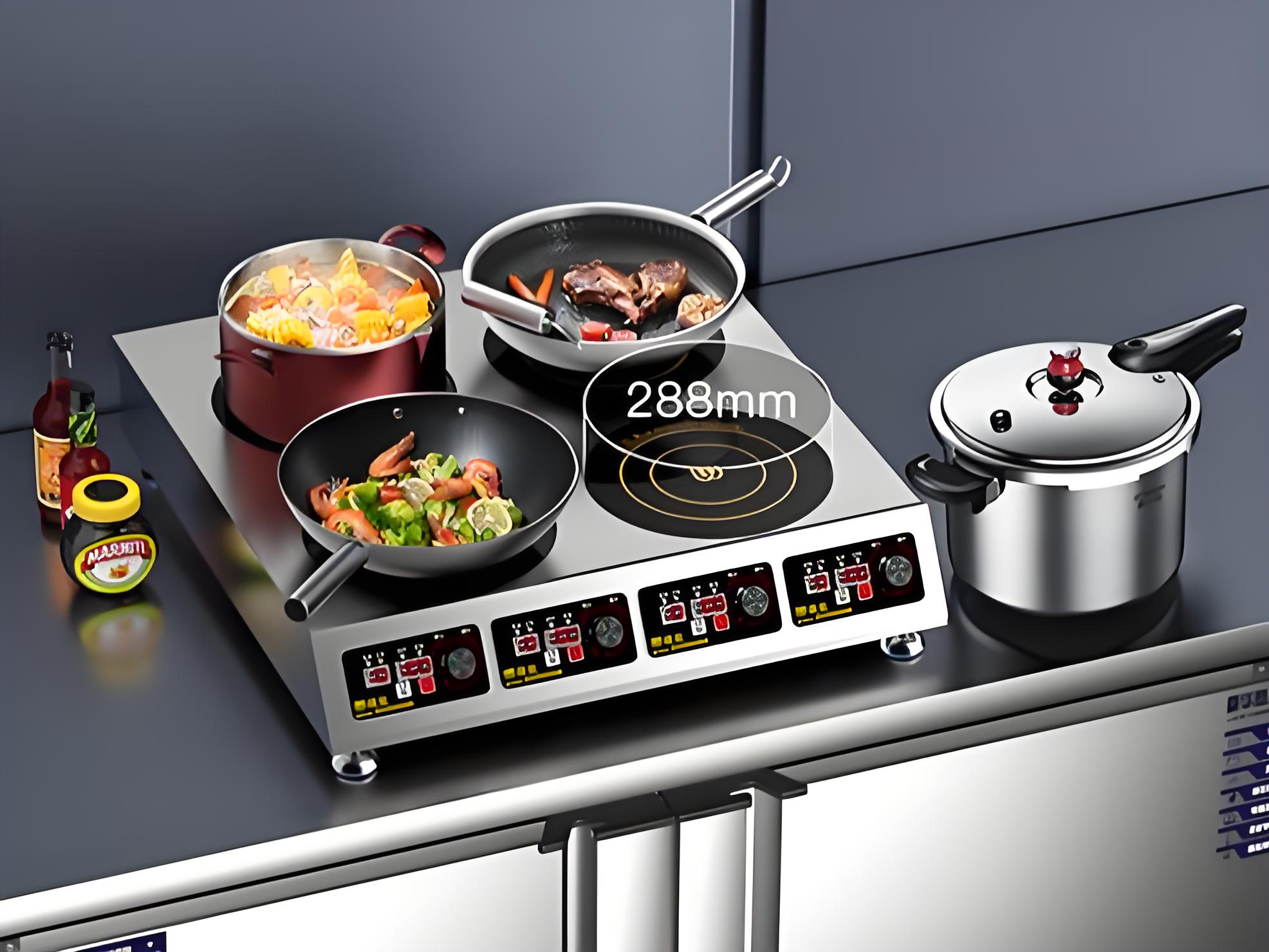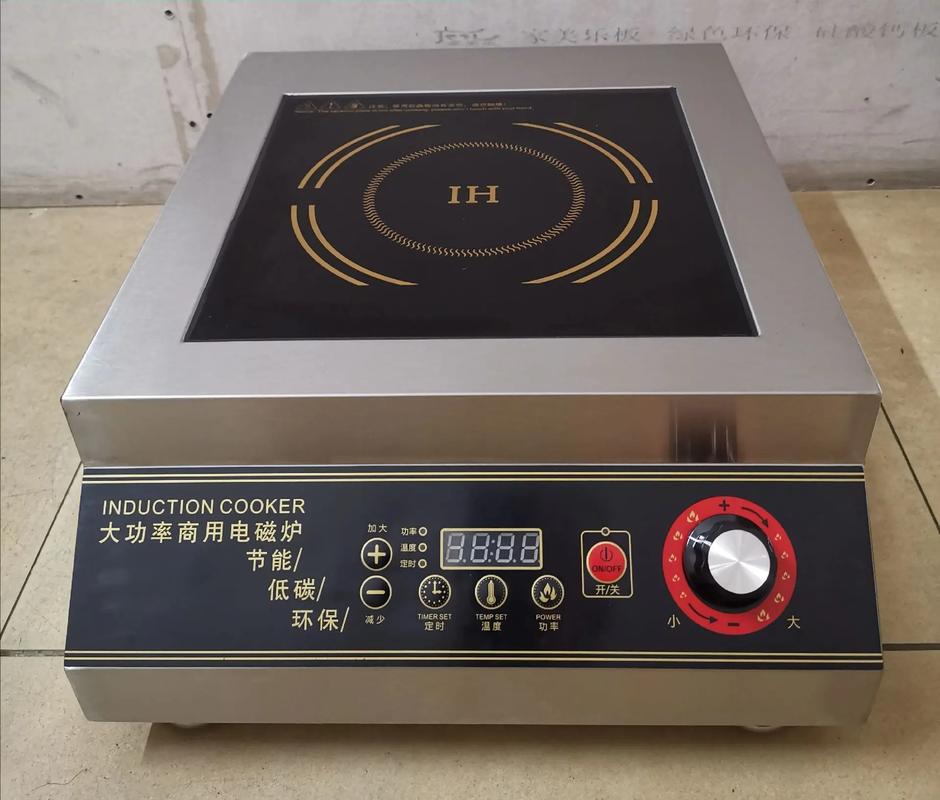Let me share a small story to kick things off. Not too long ago, a client who runs a bustling noodle shop in Singapore reached out to me, almost in panic. His monthly electricity bill had soared past what he expected, and he was dead sure the culprit was his new commercial induction cookers. After some digging, I helped him understand where the numbers came from — and why, in many cases, it’s perfectly normal for a commercial induction cooker to consume significant power, especially under heavy operation.

I’ve spent over a decade in this field, working closely with restaurants, hotel kitchens, and large food courts across Asia. Through countless installs, repairs, and kitchen optimizations, I’ve seen just about every scenario play out. So let’s unpack this together in simple terms.
Why Do Commercial Induction Cookers Consume So Much Electricity?
1. Designed For Heavy Loads
Unlike domestic induction cookers, commercial models are built for continuous, high-output cooking. It’s common to see single-head units rated at 5kW to 8kW, while multi-head setups or large stockpot types easily hit 15kW and beyond.
For comparison:
| Type | Power Range | Typical Usage Scenario |
|---|---|---|
| Home induction cooktop | 1.8kW – 3kW | Boiling soup, stir-fry at home |
| Small commercial unit | 3.5kW – 5kW | Breakfast shops, light cafés |
| Large wok or stockpot induction | 8kW – 20kW | Busy restaurants, hotels |
2. Induction = High Efficiency, But Still Energy Hungry
A common misunderstanding: induction is high efficiency, not low energy. Compared to gas, induction transfers roughly 90%+ of its energy into the pot, versus around 40%-60% for gas.
But the sheer power rating is much higher, and if your operation is non-stop during lunch & dinner peaks, you’ll see hefty consumption.
3. Operational Habits Play A Huge Role
I’ve watched kitchen staff leave induction cookers idling at full power even when not actively cooking. Many chefs like to keep pans piping hot for speed — understandable, but that means your cooker is drawing near maximum power even when idle.
So… Is This Power Consumption “Normal”?
Short answer: In most busy commercial kitchens — yes.
But that doesn’t mean you can’t optimize it.
When it’s normal:
You’re running a high-volume operation, needing multiple burners at high settings during peak hours.
Your equipment is sized appropriately (not oversized) for your kitchen load.
Your daily run time matches your customer flow (for example, 6 hours heavy cooking).
When it’s abnormal:
Bills are far above your industry peers with similar turnover.
Equipment frequently hits max power for long periods even during slow hours.
The outer case or induction coil seems unusually hot — a sign of inefficiency or maintenance need.

Real-World Example: Power Cost Estimate
Let’s break down roughly what a standard 8kW induction wok might cost to run.
(These are average figures. Local rates vary.)
| Power Rating | Usage Time | kWh Consumed | Cost (@$0.12/kWh) |
|---|---|---|---|
| 8kW | 4 hours | 32 kWh | $3.84 |
| 8kW | 8 hours | 64 kWh | $7.68 |
When you consider these cookers replace multiple gas burners (which have their own high fuel costs), the numbers often level out.
How To Reduce Electricity Bills Without Sacrificing Kitchen Speed
Optimize Cooking Procedures
Encourage staff to use lower power settings for simmering. Many keep it at 100% out of habit.
Use lids on pots to reduce energy demand.
Maintain Your Equipment
A dirty fan or blocked coil can make the induction module work harder, pulling more current to maintain set temperatures.
Schedule quarterly maintenance checks.
Right-Size Your Units
Don’t buy an 18kW monster if your business rarely needs it. Sometimes two 5kW units give more flexibility.
Ventilation Matters
Hot kitchen = harder for the induction cooler to dissipate heat, reducing efficiency. Proper ventilation helps.

My Personal Take As Someone Who Installs These For A Living
If you’re seeing a spike in electricity bills after moving to induction, it often means your kitchen is busy and your cookers are working as designed. It’s usually more about understanding where your energy is going, and tweaking operations, than blaming the equipment.
That said, if your bills are sky-high compared to peers, get a technician to do a quick energy audit. I’ve uncovered all sorts of issues over the years, from poorly calibrated power modules drawing excess current, to staff accidentally running idle burners all day.
Frequently Asked Questions
Q1: Is induction more expensive to run than gas?
In raw per-kWh terms, sometimes yes. But because induction is highly efficient, it usually balances out. You also save on kitchen cooling costs because there’s less ambient heat.
Q2: My induction keeps “tripping” the breaker. Is that related to high power draw?
Yes — it’s often because your circuit isn’t rated for the total load. A proper commercial induction setup needs dedicated, high-capacity wiring. Always get a licensed electrician to assess.
Q3: Does using smaller pans help reduce power?
Not necessarily. Induction heats based on the power level set, not directly on pan size. But oversized pans or warped bottoms can cause poor coupling, making the unit work harder.





